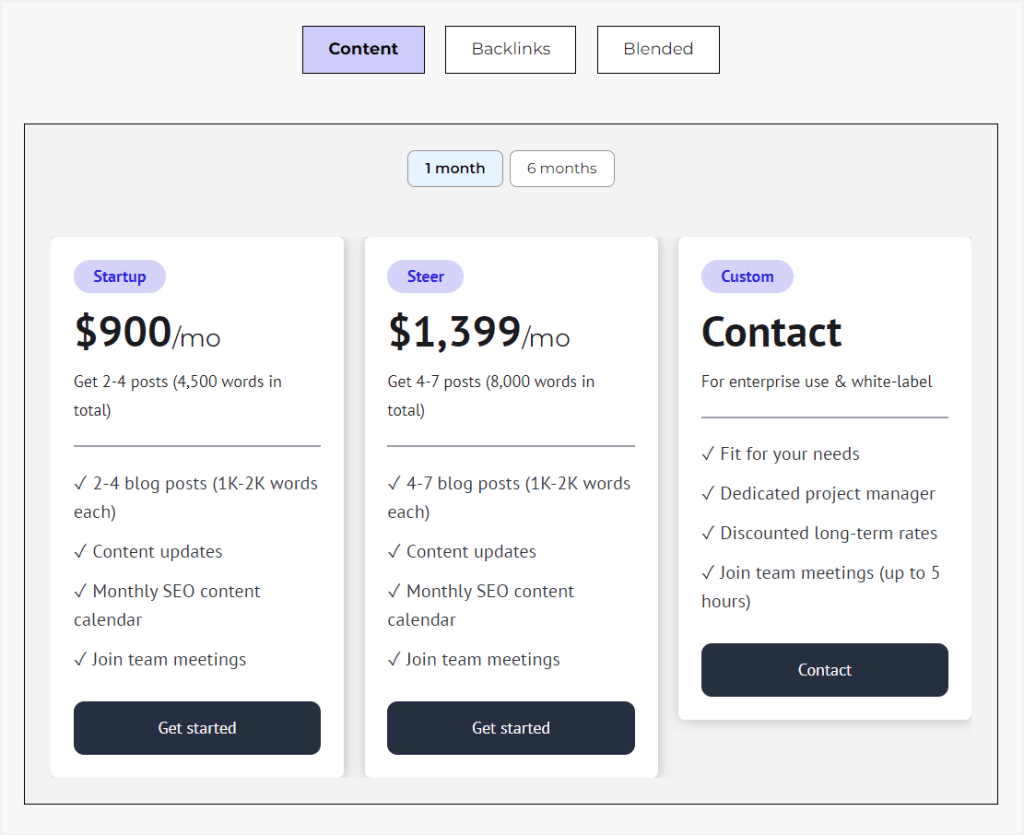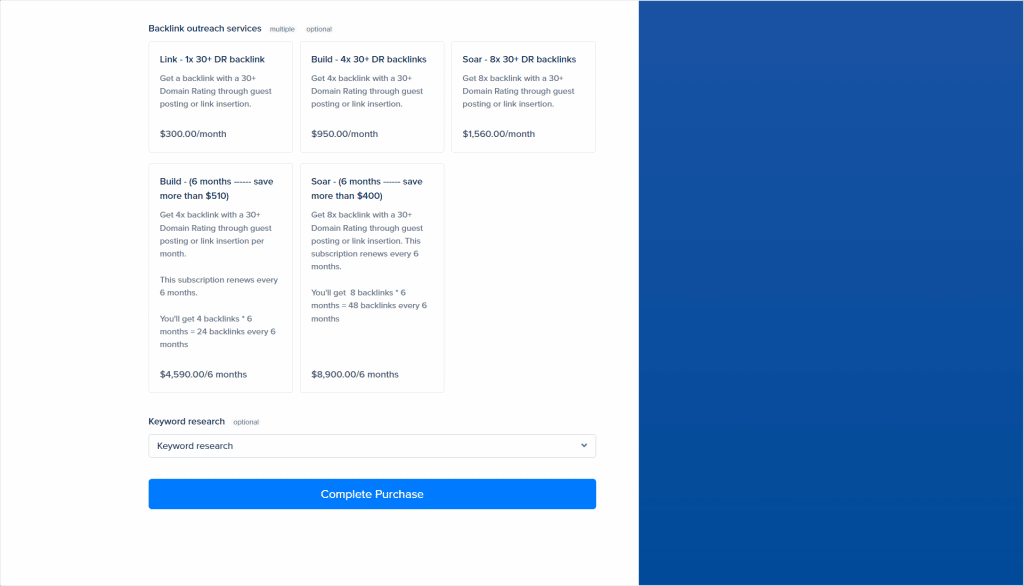Freelancers have a lot on their plate.
They basically have to be the John Wick of services.
The John Wick that was initially set to kill 3 people, but ended up eliminating 77 villains in the first movie.
Just like a freelancer who has to do everything themselves and always ends up doing more work than intended.
That is why many freelancers look for solutions to ease their pain and break the shackles of their own business trying to enslave them.
Two of such ways are going for value based freelancing and for selling productized services. Both models put particular emphasis on showcasing the final result to the client, whether that’s to justify the price you’ve set or to simply sell better.
But there are actually more differences to them than similarities.
In this article, we’re going to focus on comparing productization with value based pricing to see which one is better, and throw in a little bit about hourly rates here and there.
Let’s get to it.
Value Based Freelancing Is Complicated But Sometimes Rewarding
Value based freelancing: a type of freelancing that uses the value based pricing strategy, i.e., pricing your services based on the value they bring to the customer.
The value is usually calculated as 15%-25% of what the client expects to earn in the first year after your service/solution/project has been delivered.
This pricing strategy works best for high-reward projects. In other cases, value based freelancing is usually too complicated to pursue.
But let’s first take a look at general pros and cons of value based pricing in a freelancing business model.
Pros
- your revenue on the project can get quite high
- it does not require you to time-track your work on the project
- it highlights the final result to the client, which makes your work feel even more valuable
Cons
- it may be difficult to obtain the information you need to estimate the value your service will bring to the client
- the client may not appreciate you asking for sensitive information, such as their revenue
- the revenue itself may not be sufficient to establish the value of your service, especially if the results are not measured in revenue, but e.g., in customer satisfaction
- the whole process can get pretty complicated, especially at the beginning of your value based pricing journey
- there’s no way you can guarantee great results or high revenue for the client thanks to your solution. So the calculations are based on what the client expects to earn, not what they will actually earn. Therefore, the client may get upset if they don’t receive the results expected, but still had to pay a certain percentage of what was expected to be earned
- value based freelancing works only for high-reward projects
- these are still custom projects, so scope creep and unexpected extensions of the delivery date may occur if you don’t take your due diligence to outline the exact scope or the number and rules of revisions and edits to be provided to the client
- some may need to use a paid discovery process, i.e., a series of meetings to establish their customer’s pain points before even establishing the value of their service, which again adds to the workload
There are definitely many cons to this pricing strategy, but still, in the case of high-reward projects, this is often the best solution, which is nicely presented in our real-life example below.
An Interesting Case of Value Based Pricing
Our real-life example of how value based pricing works takes us back to the creation of the infamous Nike logo.
The Nike’s logo we know now, the characteristic swoosh we would recognize anywhere, was first designed in 1971 by Carolyn Davidson – a graphic design student at the time, for a total of $35.
The company was then named the Blue Ribbon Sports and wanted a logo inspired by the Adidas brand. It so happened that one of the founders, Phil Knight, was one of Carolyn’s professors (an accounting professor) who reached out to her asking for logo design work.
Carolyn accepted the offer and got to work. She prepared a few options, including the infamous swoosh that Phil Knight ultimately chose. It’s worth underlining that Phil wasn’t very fond of the logo design at first, but the company’s budget wouldn’t allow for a new logo to be designed, so he accepted it.
Now, the logo itself was inspired by a Greek goddess named Nike. Specifically her wings that the swoosh resembles. Now, the wings were supposed to motivate and encourage Greek soldiers to fight. When they would win the fight, they’d acclaim Nike.
So, it turns out that Carolyn did not only design the logo itself, but also came up with the name for the company.
12 years later, in 1983, Carolyn was invited to an executive dinner at Nike and received a diamond ring with the Nike swoosh engraved and was awarded with the company’s stock as well.
It’s worth noting that Carolyn did not actually use value based pricing when estimating the logo’s price, but an hourly rate of $2 an hour.
But this example best showcases the potential of value based pricing, meaning how much your service can be worth to a company. Especially to a highly-earning one. Should Carolyn be able to predict the revenue the company would get in the future, the price of the new logo would definitely not cost them $35.
Productized Services Are a Major Time-Saver
Productized services: services sold like products, i.e., with structured process of delivery, fixed price, defined scope, and preferably a set delivery date.
Service productization may not be as highly-rewarding as value based pricing, but it does give you more benefits.
Most importantly, productized services work with many different types of projects and clients, and are not limited only to high-rewarding ones.
You can also choose any productized services model you find will best suit your business and the type of services you deliver to clients.
There are productized services in the form of monthly-retainers, one-time fee projects, unlimited tasks performed on a subscription basis, and even coaching-like models that offer a 1:1 or 1:many consulting services.
Now, again, let’s first take a look at the general pros and cons of this pricing model for freelancers.
Pros
- you can set the fee for the productized service for anything you find suitable and won’t have to deal with proposals, offers, quotes, or price negotiations with clients before working on the project
- you can receive the compensation for the project before you start working on it, thanks to upfront payments
- you’ll save so much time because the sales process will be cut short, thanks to eliminating the unnecessary back-and-forth before proceeding to checkout. Self-service is what both clients and sellers appreciate in productization
- your service delivery processes become standardized, which helps with making your business more predictable in terms of the needed resources, time, and exact steps needed to be taken to deliver your productized services. Plus, it gives you the possibility to turn freelancing into an agency and delegate the work to others
- productized services give a lot of opportunities to automate and scale your freelancing business
- you’ll easily highlight the final result to the client, which helps in selling more efficiently
- the fixed fee makes it possible to easily evaluate your net profit
- defined scope of productized services completely eliminates scope creep
- defined scope, fixed price, and set delivery date make it easier for the client to decide on purchase, because they know exactly what they’re getting
Cons
- the fixed fee does not leave any room for price negotiations, which may lead to missed opportunities
- it sometimes requires niching down, which may cut your customer base
- it may take some time to implement the new pricing strategy and to convince previous customers to the new system
If you want to learn more about productization, you can read our articles on that topic, including:
- a guide on how to productize a service
- productized service examples
- mistakes to avoid in a productized service business
- how to upsell your productized service offering
Now, onto a real-life example of a productized service business to help you visualize that business model a bit better.
How Julian Earned $12k in MRR Thanks to Productized Services
From sleeping on friend’s couches, having imposter syndrome, and freelancing to creating a successful productized service agency.
Julian Canlas recognized the power of productized services when working on his new content creation business after having freelanced a digital strategist job for around 3 years.
His new agency called Embarque was founded in May 2020 and now, after 2,5 years the productized service business earns him more than $12k in Monthly Recurring Revenue.
Julian’s agency offers a few types of packaged services dividing them between content, backlink, and blended packages, as well as between 1 and 6 months options.

After choosing the package we want to buy, all we have to do is click on the Get Started button to get forwarded to a simple checkout to complete our purchase.

Embarque then asks us to fill out a basic questionnaire and starts their work on service delivery.
Now, service productization gave Julian’s agency a whole lot of time saved, automated processes, and a lot of recurring revenue.
But Julian also decided to give his customers the option to contact the agency in case of bigger or custom projects with a Custom package nicely visible in the offer and a Contact button right below.
Why is this important?
This ensures not limiting your business to work only with productized services. Who knows, maybe a big client may show up with a complicated project, which will be best to sell using value based pricing. Julian knows how not to miss out on an opportunity.
How Did Embarque Productize Their Services?
Embarque designed their website to showcase their productized services in a simple and neat, yet effective way. Each offer is completed with a Get started button that forwards us to a checkout page delivered by the SPP software.
If you’re considering building a productized service business, but want to ease your life, just like Embarque did, using proper software for that purpose is a good idea.
SPP – Service Provider Pro is one of the more simple to operate productized service software options currently available on the market.
But with its simplicity also comes the simplicity of the checkout pages and the old UX on them.
That’s why, we’d highly recommend going for a software that’s completely free to use on the Starter plan, boasts beautiful and modern designs, and is simple to use at the same time: Zendo.
If you want to see how SPP compares with Zendo and ManyRequests as productized service software in more detail, go ahead and read our comparison article.
Actual Comparison: Value Based vs Fixed Fee vs Hourly Rate
Now let’s actually get to comparing value based pricing with productized services. We’ll also throw in hourly rates to that comparison for a good measure.
The comparison is divided into three different case scenarios to really highlight the strengths and weaknesses of each pricing strategy.
Case #1: High-Reward Projects
For the first case, we’ll have to imagine you’re a graphic designer, designing a new logo for McDonald’s.
The golden arches are no longer in fashion, and McDonald’s begs for a refreshment. So they start to look for the best logo designer out there, and they find you.
Now, you’re wondering which pricing strategy you should choose.
Let’s help you decide.
| PRICING STRATEGY | HOURLY RATE | FIXED FEE | VALUE BASED |
| 💳PRICE | $60/hour, 25 hours of work = $1500 | $2500 | 15%-25% of McDonald’s income from the logo |
| ✔️PROS | Great for beginners | Doesn’t require any calculations | The highest paying when dealing with a big client, like McDonald’s |
| Feels familiar for Clients | Doesn’t require any negotiations or additional work | ||
| Good for undefined projects, with frequent scope changes | Comes with standardized processes: the easiest to carry out | ||
| ❌CONS | Requires tracking working hours | The fee is fixed, so even with a big client, we can’t really spike it up | Requires a lot of calculations |
| Least paying | Requires us to collect sensitive details about the client’s income, finances, and more | ||
| Some details we may need to get, may be difficult to reach |
So, in the case of such a big client as McDonald’s, choosing the value based pricing strategy, even though it comes with additional work, is definitely the best option.
Why?
Because you can get a lot in return.
Just like with our Nike example, a company like McDonald’s has enormous turnover. In 2021 alone, the company’s annual revenue equaled over 23 thousand millions in USD, i.e., over 20 billion USD, in just that one year.
You can roughly calculate how much a brand-new logo will impact McDonald’s earnings, aka how much a new logo is worth to McDonald’s as a company, and based on that information, set its price.
Of course, that won’t be easy nor pleasant to do. But it may be worth a lot.
In a case like this, the logo design could cost even one million USD.
But it’s crucial to note that projects like this may be a one in a million case.
Case #2: One-Time Standards
In case #2, we’ll review an SEO example.
Because SEO services may be considered one of broader and not closely defined ones, with different cases, requests, and processes with each and every client.
So, this time, let’s imagine you’re an experienced SEO expert offering all kinds of services from audits through copy editing to keyword research and internal linking architecture.
But you’re tired of reinventing the wheel with each client and look for ways to standardize your processes.
Someone suggests trying productized services, and you grab onto that opportunity like a bear with a sore head.
Now, the best productization model to go for if you want to standardize your processes as much as possible, but you also aim for future automation and scaling is the one-time fee model.
So you take all your custom SEO services you’ve been offering, and you choose a few that you can niche down and create specific packages out of. These packages will have a one-time fee payable upfront by the client on their own. Meaning, you can automatically set yourself free from quotes and negotiations.
You choose SEO audit and keyword research as your first two productized services. So you go ahead and clearly define their scope, fixed price, and turnaround time.
These two test packages already gave you more time thanks to:
- Eliminating negotiations, offers, and proposals with self-checkout available for clients
- Clearly defined scope of the services that cut out scope creep
- Standardized processes of delivery that make it possible to delegate your work to others and perform the work much more efficiently
If you want to automate your services, establish true and tested processes, and be able to easily calculate your revenue, productized services are the way to go.
The only potential threat to using this strategy as an expert with an established client base would be convincing your clients to the new system. But it offers many benefits to the customer as well, it’s in our best interest to highlight those benefits to the clients when doing the switch.
Plus, testing productization on a few services at first also helps!
Why not value based or hourly rates in this case?
Both value based and hourly pricing in this case would be too complicated and definitely wouldn’t save you any time. Contrary, these strategies would even unnecessarily add to the workload without adding any more value. You’d have to calculate the value of the project each time or track your hours each time. While productized services don’t require doing any of that.
Case #3: Beginner Freelancer
Now let’s go back to the beginning.
Let’s imagine you’re at the start of your freelancing journey.
Still excited and clueless.
But, all jokes aside. Beginner freelancers may actually take advantage of the most unprofitable at first glance pricing strategy – hourly rates.
Why?
Because that is the strategy your potential clients may be the most comfortable with. Both value based and productized services are still new concepts for customers who may need a little more persuasion to change their buying habits.
Hourly rates are the most straight-forward and therefore may be beneficial at the beginning of your journey, when you’re still trying to get to know your ideal client more, find your processes, and figure this whole freelancing thing out.
Potential Threat
The biggest potential threat in this case is: wrong estimation.
You have to meticulously plan your work ahead and decide how many hours each project may take. The client who’s already in the mindset that he’s going to pay for 20 hours of your work, may be a little shocked when the final price will be doubled, because the project took more work than expected.
Comparison Summary
✔️ Value based freelancing is best for high-reward projects
✔️ Productized services are best for experienced freelancers who know their processes, clients, and want to automate and scale their business
✔️ Hourly rates are best for beginner freelancers who may have trouble explaining more complicated pricing concepts to clients
Value Based Freelancing vs Productized Service: Are They Mutually Exclusive?
Productized services and value based pricing don’t necessarily have to be mutually exclusive.
You can take advantage of both pricing models in your freelance business. Simply adjust the model to the situation.
In case of high-reward projects, go for value based freelancing, estimating the fixed fee based on the value it will bring to the client or their own business. An easy way to do this is to leave a Book a Call option on your website and encourage your customers to reach out whenever they have a more complex project in mind, just like Julian from Embarque did.
And in case of non-high-reward projects, go for productized services to gain more time you would spend on calculating the value. That way, you’ll be able to automate and scale your freelancing business instead of hitting a revenue ceiling.
Let’s also remember that hourly-rates, even though seem impractical, may be beneficial at the beginning of your journey, thanks to how easy and logical they seem to clients.
In either case, it really comes out to the fact that each service-based business needs to bend over backwards to showcase the value that comes from their services to the clients. Because it’s much more difficult than just presenting a nice product on a store shelf. That’s especially true to freelance services, because you have to do all that work yourself.
But you can still find your way out when properly implementing the right pricing strategy. Get the best of both worlds and make freelancing high-income and actually time-flexible while giving your clients what they want: the best possible results!

A free online training. Delivered daily to your inbox to grow your productized agency.











